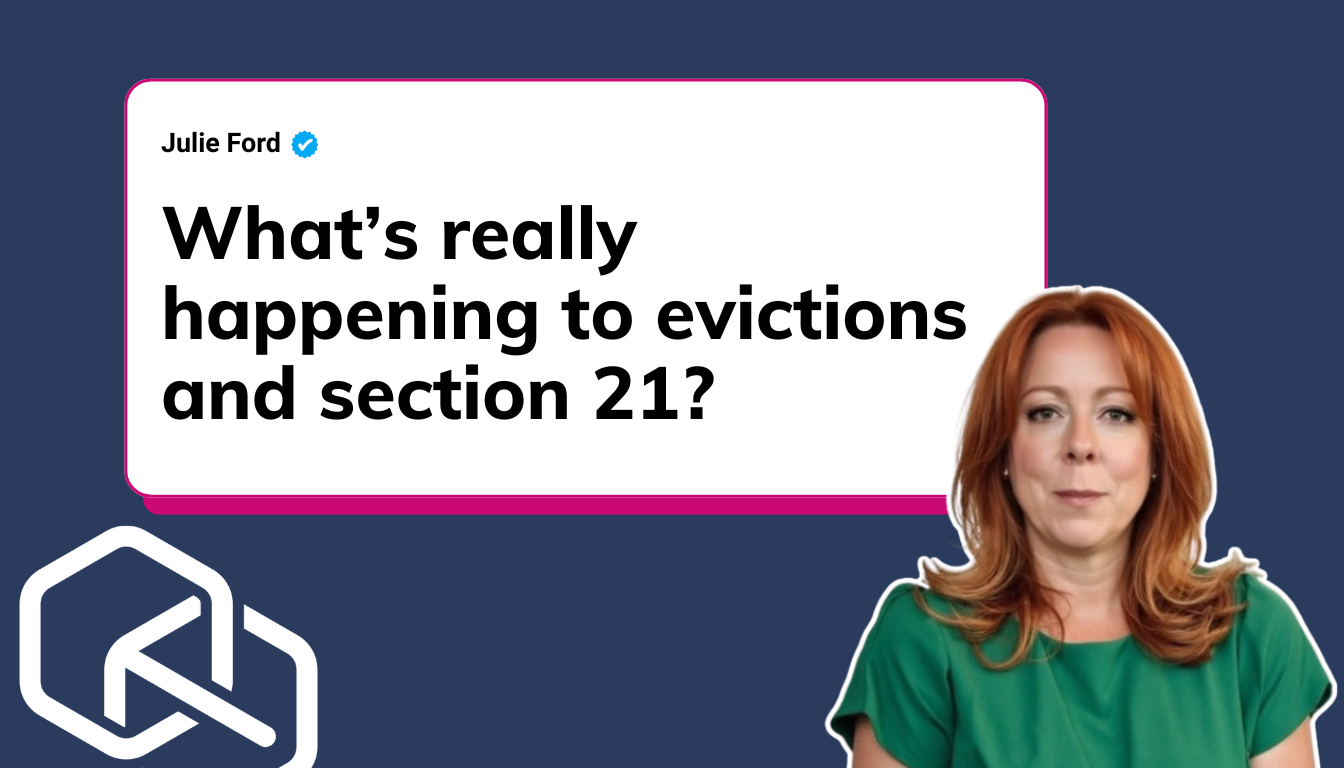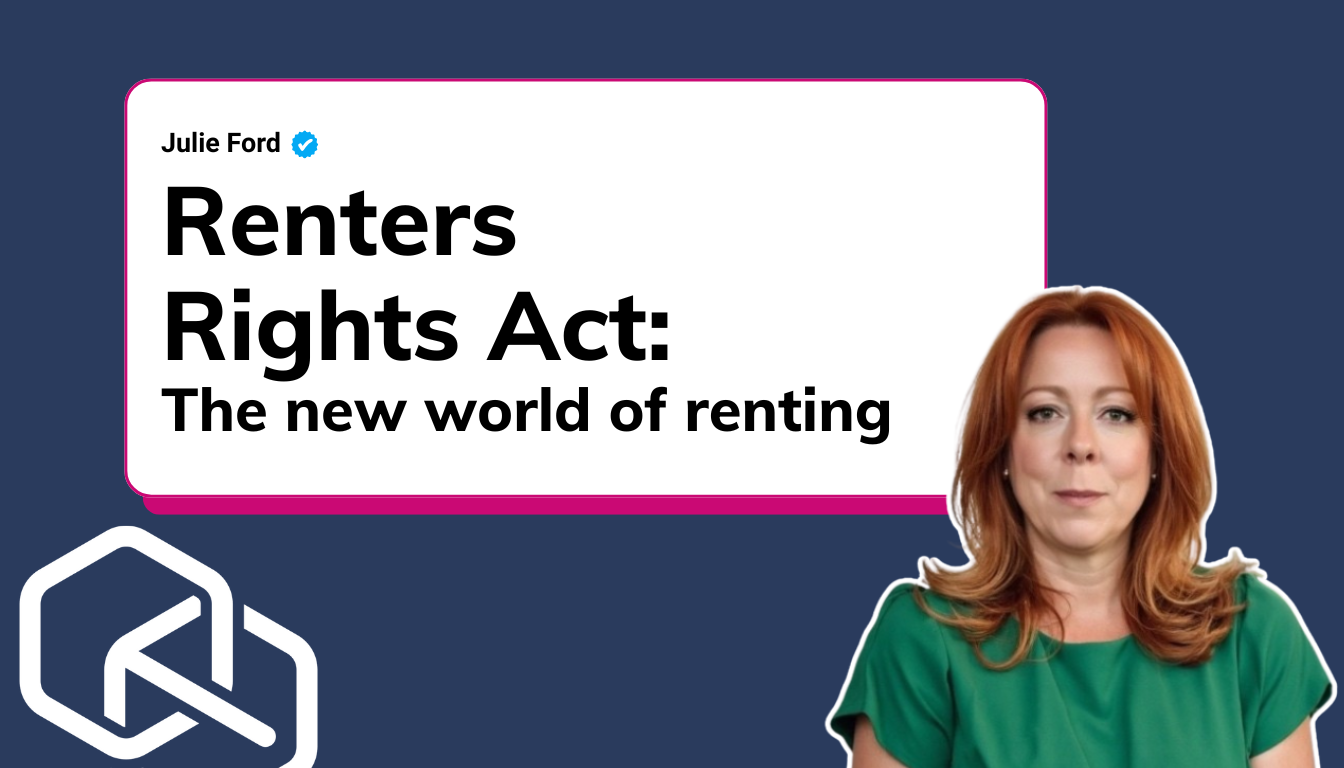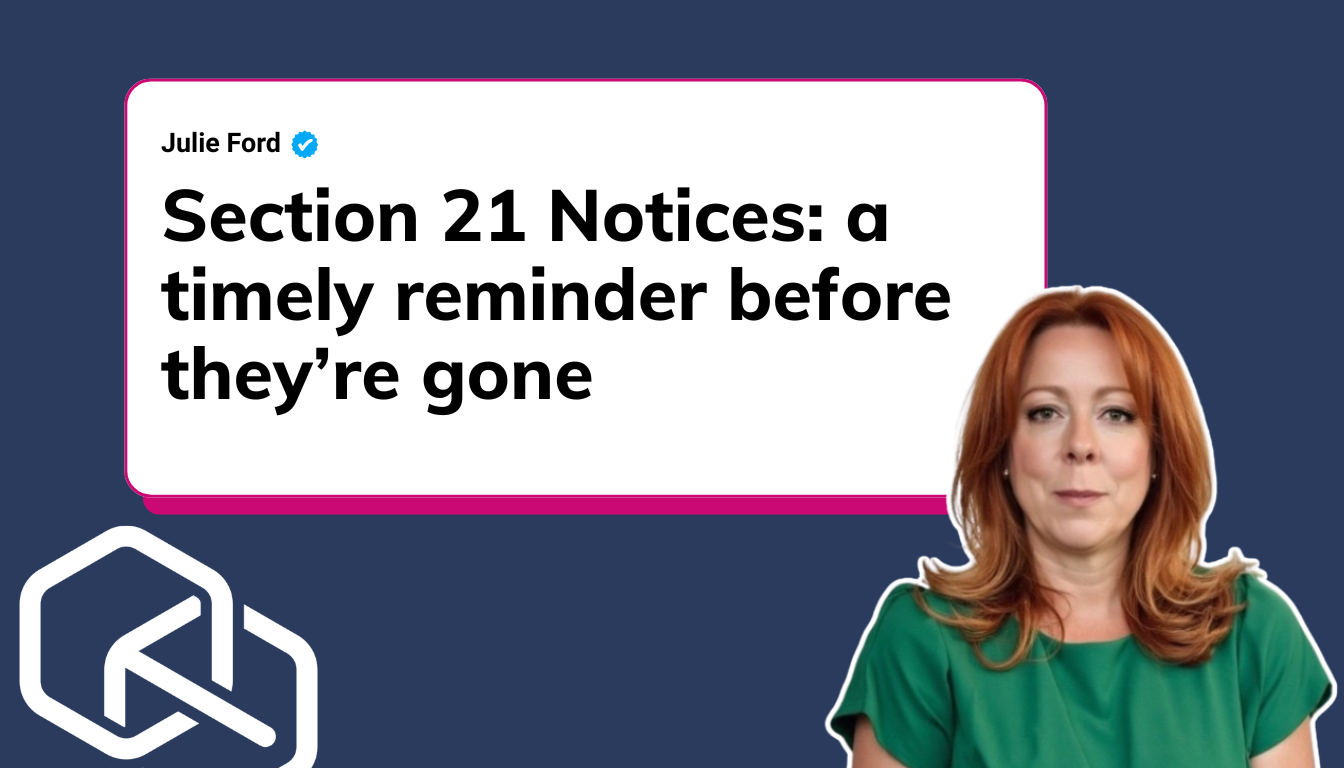A clear-eyed look at the end of ‘no-fault’ evictions and what it means for landlords
If you’ve been anywhere near the news lately, you’ve probably seen the headlines:
“Section 21 is being abolished!”
“Landlords will no longer be able to evict tenants!”
And while those headlines certainly grab attention, they don’t quite tell the full story.
Let’s clear it up: yes, Section 21, commonly known as the ‘no-fault’ eviction notice, is being abolished under the upcoming Renters Reform Bill (RRB). But no, that doesn’t mean landlords are being stripped of the right to regain possession of their property.
In fact, for most responsible landlords, the practical changes may be far less dramatic than they sound.
What is Section 21, and Why Is It Being Abolished?
Section 21 refers to a specific clause in the Housing Act 1988, introduced during Margaret Thatcher’s government. It created the “assured shorthold tenancy” (AST), a revolutionary concept at the time, allowing landlords to regain possession of their property without needing to prove a specific reason, provided they gave two months’ notice.
This made the process simpler, faster, and less confrontational than Section 8, which requires landlords to demonstrate specific breaches (e.g., rent arrears, antisocial behaviour).
But over time, Section 21 became a catch-all tool, sometimes used when landlords couldn’t navigate a slow, overburdened court system. Critics argued it gave too much power to landlords and created instability for tenants. And so, the Renters Reform Bill seeks to reverse that legacy by removing Section 21 entirely, effectively reverting all ASTs back to assured tenancies that require a legal reason for eviction.
Will Landlords Still Be Able to Evict Tenants?
Yes, absolutely.
Under the new legislation, landlords will still be able to regain possession of their property. They’ll just need to use Section 8 and select one (or more) of the 36 legal grounds for eviction.
These include:
- Rent arrears
- Antisocial behaviour
- Breach of tenancy
- Persistent late payment
- And newly expanded grounds, like:
- Ground 1A: Wanting to sell the property
- Updated Ground 1: Wanting to move in or house a close family member
In many ways, these new and updated grounds are designed to reassure landlords that legitimate possession cases, especially those involving sale, family relocation, or severe breaches, will still be supported by law.
Why Was Section 21 So Popular?
Most landlords didn’t use Section 21 to evict good tenants. They used it because it was simpler, quicker, and more reliable than Section 8, especially in a court system bogged down by delays.
In truth, Section 21 became the default not because landlords were lazy or heartless, but because the system made it too risky and time-consuming to pursue eviction under Section 8, even in clear-cut cases.
What Happens to Section 21 Before the Law Changes?
Until the Renters Reform Bill becomes law, Section 21 is still a valid route for eviction. But there are some important deadlines and conditions to understand.
Landlords will have up until 4:00 PM on the day before the RRB comes into force to serve a Section 21 notice, provided the tenancy is eligible. That means:
- The tenancy is periodic, or the fixed term is due to end within two months
- All compliance documents have been served (Gas Safety, EPC, How to Rent, deposit protection)
- There are no disqualifying repair issues or Improvement Notices from the council
Once served, that Section 21 remains valid, and the landlord can apply to court under the existing rules, but there’s a catch.
Currently, landlords have 6 months from the date of service to follow through with court action, 2 months of notice, and 4 more months to apply for possession.
But under the new rules, that window will shrink significantly:
Landlords will have only 1 month to apply to court after the 2-month notice expires.
This is where many landlords could get caught out. If you don’t apply in time, you won’t be able to issue another Section 21, because, by then, it will no longer exist. You’d have to rely on Section 8, with all its procedural complexity.
So, What Should Landlords Be Doing Now?
If you’re considering serving a Section 21 notice, check your documentation immediately. Make sure your compliance is watertight and your timing works. If the tenancy is within scope and you have valid grounds to regain possession, acting before the legislation changes might be the right move, but only if you’re prepared to follow through.
And for the long term? Familiarize yourself with the new Section 8 grounds, understand what documentation you’ll need, and consider working closely with a lettings specialist or legal advisor to avoid costly missteps.
Final Thought
The abolition of Section 21 isn’t the end of evictions. It’s the start of a more structured and transparent process, one that still gives landlords the right to regain control of their property but with clearer, reason-based accountability.
For landlords who already manage their tenancies well, who respond to issues, follow compliance, and build good relationships, this change may feel more like an administrative shift than a fundamental threat.
The real danger? Not being prepared.
So take stock now, double-check your notices, and don’t leave it to the last minute.
A clear-eyed look at the end of ‘no-fault’ evictions and what it means for landlords
If you’ve been anywhere near the news lately, you’ve probably seen the headlines:
“Section 21 is being abolished!”
“Landlords will no longer be able to evict tenants!”
And while those headlines certainly grab attention, they don’t quite tell the full story.
Let’s clear it up: yes, Section 21, commonly known as the ‘no-fault’ eviction notice, is being abolished under the upcoming Renters Reform Bill (RRB). But no, that doesn’t mean landlords are being stripped of the right to regain possession of their property.
In fact, for most responsible landlords, the practical changes may be far less dramatic than they sound.
What is Section 21, and Why Is It Being Abolished?
Section 21 refers to a specific clause in the Housing Act 1988, introduced during Margaret Thatcher’s government. It created the “assured shorthold tenancy” (AST), a revolutionary concept at the time, allowing landlords to regain possession of their property without needing to prove a specific reason, provided they gave two months’ notice.
This made the process simpler, faster, and less confrontational than Section 8, which requires landlords to demonstrate specific breaches (e.g., rent arrears, antisocial behaviour).
But over time, Section 21 became a catch-all tool, sometimes used when landlords couldn’t navigate a slow, overburdened court system. Critics argued it gave too much power to landlords and created instability for tenants. And so, the Renters Reform Bill seeks to reverse that legacy by removing Section 21 entirely, effectively reverting all ASTs back to assured tenancies that require a legal reason for eviction.
Will Landlords Still Be Able to Evict Tenants?
Yes, absolutely.
Under the new legislation, landlords will still be able to regain possession of their property. They’ll just need to use Section 8 and select one (or more) of the 36 legal grounds for eviction.
These include:
- Rent arrears
- Antisocial behaviour
- Breach of tenancy
- Persistent late payment
- And newly expanded grounds, like:
- Ground 1A: Wanting to sell the property
- Updated Ground 1: Wanting to move in or house a close family member
In many ways, these new and updated grounds are designed to reassure landlords that legitimate possession cases, especially those involving sale, family relocation, or severe breaches, will still be supported by law.
Why Was Section 21 So Popular?
Most landlords didn’t use Section 21 to evict good tenants. They used it because it was simpler, quicker, and more reliable than Section 8, especially in a court system bogged down by delays.
In truth, Section 21 became the default not because landlords were lazy or heartless, but because the system made it too risky and time-consuming to pursue eviction under Section 8, even in clear-cut cases.
What Happens to Section 21 Before the Law Changes?
Until the Renters Reform Bill becomes law, Section 21 is still a valid route for eviction. But there are some important deadlines and conditions to understand.
Landlords will have up until 4:00 PM on the day before the RRB comes into force to serve a Section 21 notice, provided the tenancy is eligible. That means:
- The tenancy is periodic, or the fixed term is due to end within two months
- All compliance documents have been served (Gas Safety, EPC, How to Rent, deposit protection)
- There are no disqualifying repair issues or Improvement Notices from the council
Once served, that Section 21 remains valid, and the landlord can apply to court under the existing rules, but there’s a catch.
Currently, landlords have 6 months from the date of service to follow through with court action, 2 months of notice, and 4 more months to apply for possession.
But under the new rules, that window will shrink significantly:
Landlords will have only 1 month to apply to court after the 2-month notice expires.
This is where many landlords could get caught out. If you don’t apply in time, you won’t be able to issue another Section 21, because, by then, it will no longer exist. You’d have to rely on Section 8, with all its procedural complexity.
So, What Should Landlords Be Doing Now?
If you’re considering serving a Section 21 notice, check your documentation immediately. Make sure your compliance is watertight and your timing works. If the tenancy is within scope and you have valid grounds to regain possession, acting before the legislation changes might be the right move, but only if you’re prepared to follow through.
And for the long term? Familiarize yourself with the new Section 8 grounds, understand what documentation you’ll need, and consider working closely with a lettings specialist or legal advisor to avoid costly missteps.
Final Thought
The abolition of Section 21 isn’t the end of evictions. It’s the start of a more structured and transparent process, one that still gives landlords the right to regain control of their property but with clearer, reason-based accountability.
For landlords who already manage their tenancies well, who respond to issues, follow compliance, and build good relationships, this change may feel more like an administrative shift than a fundamental threat.
The real danger? Not being prepared.
So take stock now, double-check your notices, and don’t leave it to the last minute.








